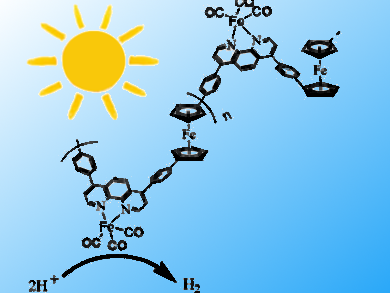Efficient catalysts for photocatalytic water splitting are useful for the generation of hydrogen as a “clean” fuel. Safety and cost issues must be considered when designing a sustainable system for this purpose. Organic conjugated polymers and derivatives containing non-noble metals fit these requirements. The careful choice of the monomers allows the straightforward tuning of the physical properties of such materials.
Shu-Ping Luo, Qing-An Wu, Zhejiang University of Technology, Hangzhou, China, and colleagues have developed a series of conjugated ferrocene-phenanthroline (Fc-phen) polymers as photocatalysts. A Heck coupling reaction between ferrocene and phenantholine derivatives was used to prepare the molecules, which were obtained as black solids and characterized by Fourier transform infrared spectroscopy (FTIR), scanning electron microscopy (SEM), X-ray diffraction (XRD), and thermogravimetric analysis (TGA) measurements.
With the developed catalysts, using NEt3 as a sacrificial electron donor and Fe3(CO)12 as a co-catalyst, H2 evolution rates of up to 212.4 μmol h–1 were achieved under irradiation with light. The best performance was reported for a system with a phenylene spacer unit between ferrocene and phenanthroline, which facilitates electron transfer, and in which coordination of Fe3(CO)12 to the phen ligand was possible.
According to the researchers, structural rigidity, as in these phenanthroline derivatives, may also be key in the design of future conjugated supramolecular polymers for water splitting.
- Structural Design of Conjugated Poly(ferrocene-phenantholine) for Photocatalytic Hydrogen Evolution from Water,
Shu-Ping Luo, Xiao-Jing Wang, Hao Chen, Zhe-Jian Yu, Wen-Ya Lou, Liang-Min Xia, Bai-Yang Lou, Xue-Fen Liu, Peng Kang, Alastair J. J. Lennox, Qing-An Wu,
ChemPhotoChem 2018.
https://doi.org/10.1002/cptc.201800070




